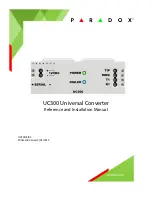
24
900-00272-01-001 Rev A
If you’re not familiar with this style of equation, an example should help. The best way to ensure you have
the right values plugged in is to make sure your units come out correctly. The academic term here is unit
analysis. If you can, you should always do this type of analysis. It will save you from doing all of your work in
kilowatts (power) just to realize you should have been in kilowatt-hours (energy) the whole time!
Example
Consider the system below:
o
(3) 48V lithium batteries in parallel
o
Each battery has a capacity of 8 kWh per cycle
o
Each battery has a cycle life of 7500 cycles
o
From the datasheet for the batteries, the efficiency is 98%.
o
This setup cost me $30,000 which included the batteries themselves, the electrical materials, and the cost of
the installation.
Calculation 1
And now make sure that all the units cancel so the equation ends with dollars per kilowatt-hour.
Calculation 2
Now that you have told the SkyBox how expensive things are, and at what time, the SkyBox compares the
value for each grid rate to the LCOE value. When the grid rate is cheaper, the SkyBox operates in the
Net
metering with backup
profile, meaning power for the loads is taken from the grid when solar power isn’t
enough and the battery is not used. When the grid rate is more expensive than the battery, the SkyBox
operates in the
Self-consumption
profile. This change in profile is only done internally. The display will
continue to say
Net metering with backup
for the profile. Here’s a visual representation of this concept:
Figure 18 Daily schedule of SkyBox internal grid use profile









































